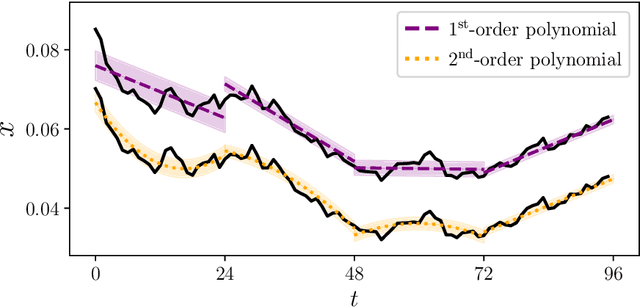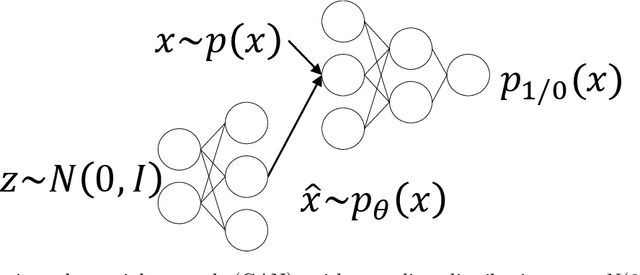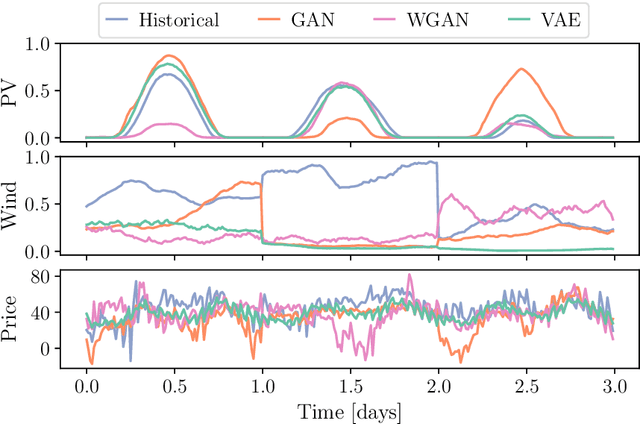Leonardo Rydin Gorjão
Probabilistic Forecasting of Day-Ahead Electricity Prices and their Volatility with LSTMs
Oct 05, 2023Abstract:Accurate forecasts of electricity prices are crucial for the management of electric power systems and the development of smart applications. European electricity prices have risen substantially and became highly volatile after the Russian invasion of Ukraine, challenging established forecasting methods. Here, we present a Long Short-Term Memory (LSTM) model for the German-Luxembourg day-ahead electricity prices addressing these challenges. The recurrent structure of the LSTM allows the model to adapt to trends, while the joint prediction of both mean and standard deviation enables a probabilistic prediction. Using a physics-inspired approach - superstatistics - to derive an explanation for the statistics of prices, we show that the LSTM model faithfully reproduces both prices and their volatility.
Understanding electricity prices beyond the merit order principle using explainable AI
Dec 09, 2022



Abstract:Electricity prices in liberalized markets are determined by the supply and demand for electric power, which are in turn driven by various external influences that vary strongly in time. In perfect competition, the merit order principle describes that dispatchable power plants enter the market in the order of their marginal costs to meet the residual load, i.e. the difference of load and renewable generation. Many market models implement this principle to predict electricity prices but typically require certain assumptions and simplifications. In this article, we present an explainable machine learning model for the prices on the German day-ahead market, which substantially outperforms a benchmark model based on the merit order principle. Our model is designed for the ex-post analysis of prices and thus builds on various external features. Using Shapley Additive exPlanation (SHAP) values, we can disentangle the role of the different features and quantify their importance from empiric data. Load, wind and solar generation are most important, as expected, but wind power appears to affect prices stronger than solar power does. Fuel prices also rank highly and show nontrivial dependencies, including strong interactions with other features revealed by a SHAP interaction analysis. Large generation ramps are correlated with high prices, again with strong feature interactions, due to the limited flexibility of nuclear and lignite plants. Our results further contribute to model development by providing quantitative insights directly from data.
Validation Methods for Energy Time Series Scenarios from Deep Generative Models
Oct 27, 2021



Abstract:The design and operation of modern energy systems are heavily influenced by time-dependent and uncertain parameters, e.g., renewable electricity generation, load-demand, and electricity prices. These are typically represented by a set of discrete realizations known as scenarios. A popular scenario generation approach uses deep generative models (DGM) that allow scenario generation without prior assumptions about the data distribution. However, the validation of generated scenarios is difficult, and a comprehensive discussion about appropriate validation methods is currently lacking. To start this discussion, we provide a critical assessment of the currently used validation methods in the energy scenario generation literature. In particular, we assess validation methods based on probability density, auto-correlation, and power spectral density. Furthermore, we propose using the multifractal detrended fluctuation analysis (MFDFA) as an additional validation method for non-trivial features like peaks, bursts, and plateaus. As representative examples, we train generative adversarial networks (GANs), Wasserstein GANs (WGANs), and variational autoencoders (VAEs) on two renewable power generation time series (photovoltaic and wind from Germany in 2013 to 2015) and an intra-day electricity price time series form the European Energy Exchange in 2017 to 2019. We apply the four validation methods to both the historical and the generated data and discuss the interpretation of validation results as well as common mistakes, pitfalls, and limitations of the validation methods. Our assessment shows that no single method sufficiently characterizes a scenario but ideally validation should include multiple methods and be interpreted carefully in the context of scenarios over short time periods.
 Add to Chrome
Add to Chrome Add to Firefox
Add to Firefox Add to Edge
Add to Edge